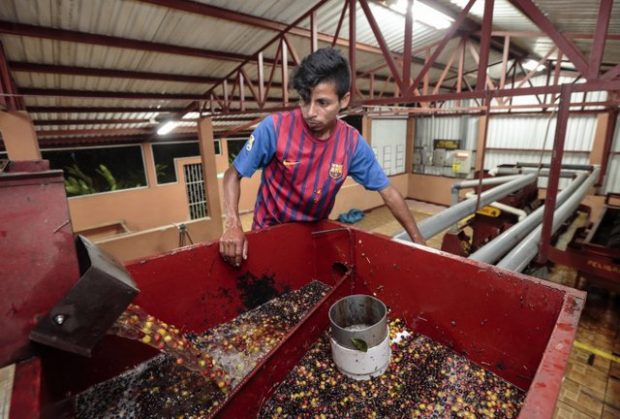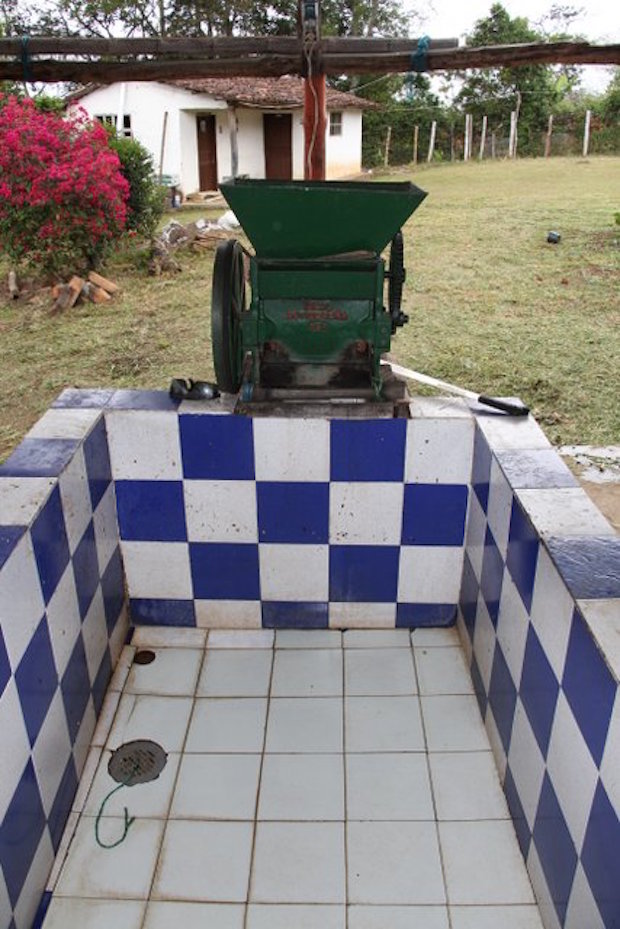Wet mills — key elements in the coffee landscape, and the first step toward transforming the cherry into a green bean.
At their core, these structures can be relatively simple. They need to receive the cherries, to depulp — and some stop here, though we won’t get too much into detail on pulped naturals, naturals or honeyed coffees — ferment and wash.
The setup of the physical infrastructure depends on the context, the local coffee history, the size of the farm and the distance to market. In Costa Rica, most of the wet milling is done in central mills, with farmers bringing their cherries to be weighed and processed every day during harvest. It’s the same in Veracruz, Mexico. However, in most of the Latin American coffeelands, everyone from estates to small holders processes their own cherries in their own wet mill.
A wet mill can range from a hand-cranked depulper into a plastic barrel or tiled lined tank, to a multi-million-dollar structure with a truck scale to weigh cherries, float tanks to separate impurities and ripe cherries, and multiple lines for depulping, fermenting and washing.
Whatever the level of investment, a great majority of wet mills are lot like Frankenstein’s monster. You start with one piece, add another piece. A piece gets adapted here, a pipe added there, and another piece repurposed here. You connect the electricity, and if all goes well, it’s alive!

Martin López, at a wet mill at La Revancha Coffee Estate in Matagalpa, Nicaragua. Photo by Oscar Leiva for CRS.
From an engineering or efficiency standpoint, this is the exact wrong way to approach the core problem of how to quickly and efficiently transform coffee cherries to green coffee beans. Too often, each piece or step in the mill gets treated like its own entity, with little thought of treating the entire wet mill process as a system, starting with a holistic design that is centered around maximizing the efficient processing of coffee cherries. Instead, the economic realities of small farmers dictate levels of investment, and therefore, these are almost all built in a piecemeal fashion.
When it’s set up efficiently and well, the wet mill processes coffee cherries with minimal use of water, with systems in place to eliminate groundwater contamination. On the quality side, you should not really perceive the milling process in your coffee unless it’s been processed differently, as with naturals or honeyed coffees. Yet it’s rarely this simple.
Most wet mills use tremendous amounts of water, funneling coffee cherries through inefficient systems that end up returning contaminated wastewater back into the environment. Wet mills are an issue that have to be dealt with on an individual basis, yet when you start doing the math and look at the sheer number of wet mills in the coffeelands, you begin to understand the scale of the problem.
For instance, let’s review some of the numbers of wet mills in some of the countries where CRS works in coffee: In Colombia, there are approximately 500,000 farmers, each with their own wet mill. There are 40,000 farmers with wet mills in Nicaragua. There are 120,000 farmers in Honduras… You begin get the picture.
By creating a yardstick, we hope that farmers and the other actors in the value chain can collaborate to make improvements in mills, and to co-investment towards increased water use efficiency and sensible water treatment systems to ensure the shared stewardship of water resources in the coffeelands.
Kraig Kraft
Kraig Kraft is the CRS Technical Advisor for Coffee and Cacao for the Latin America/Caribbean. He is Based in Managua.








Comment